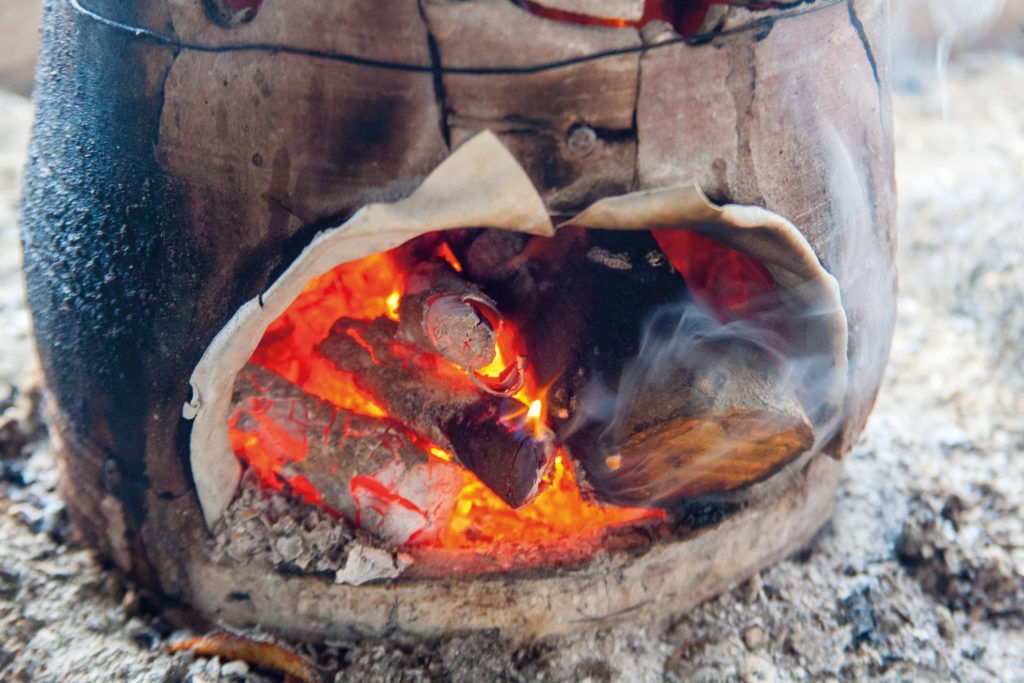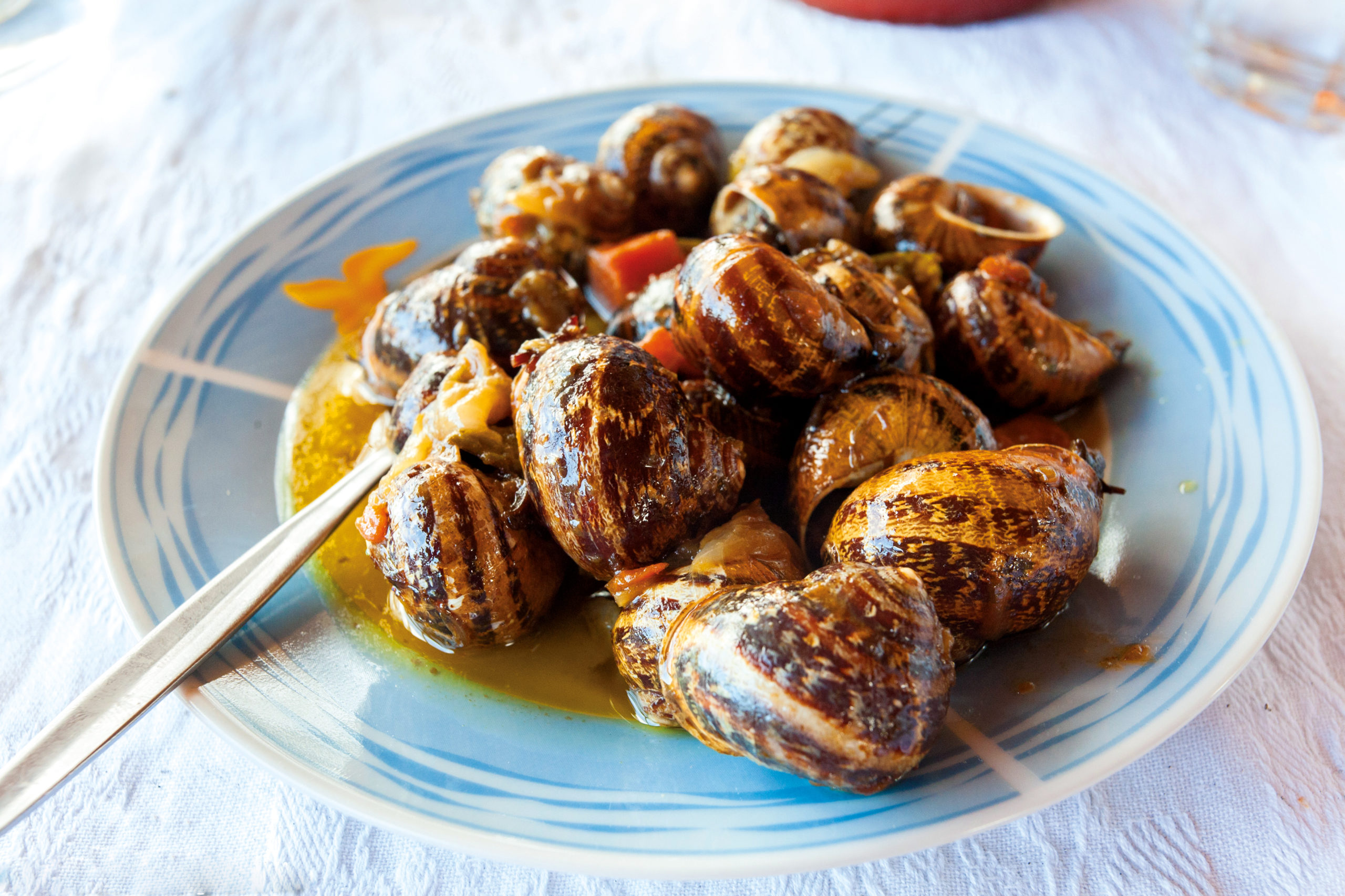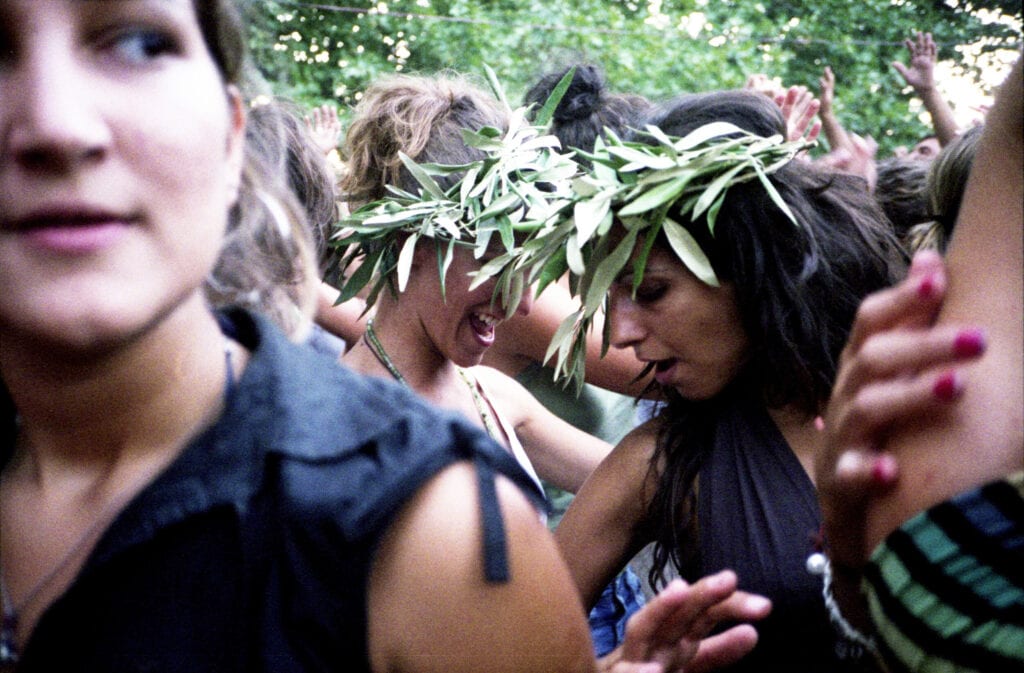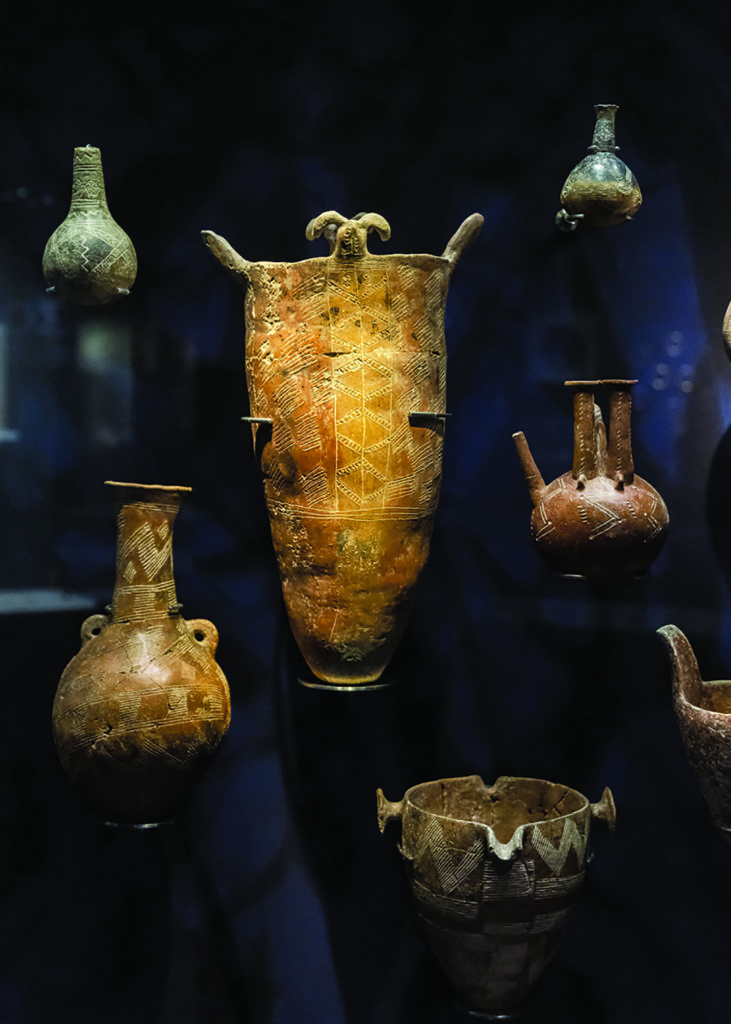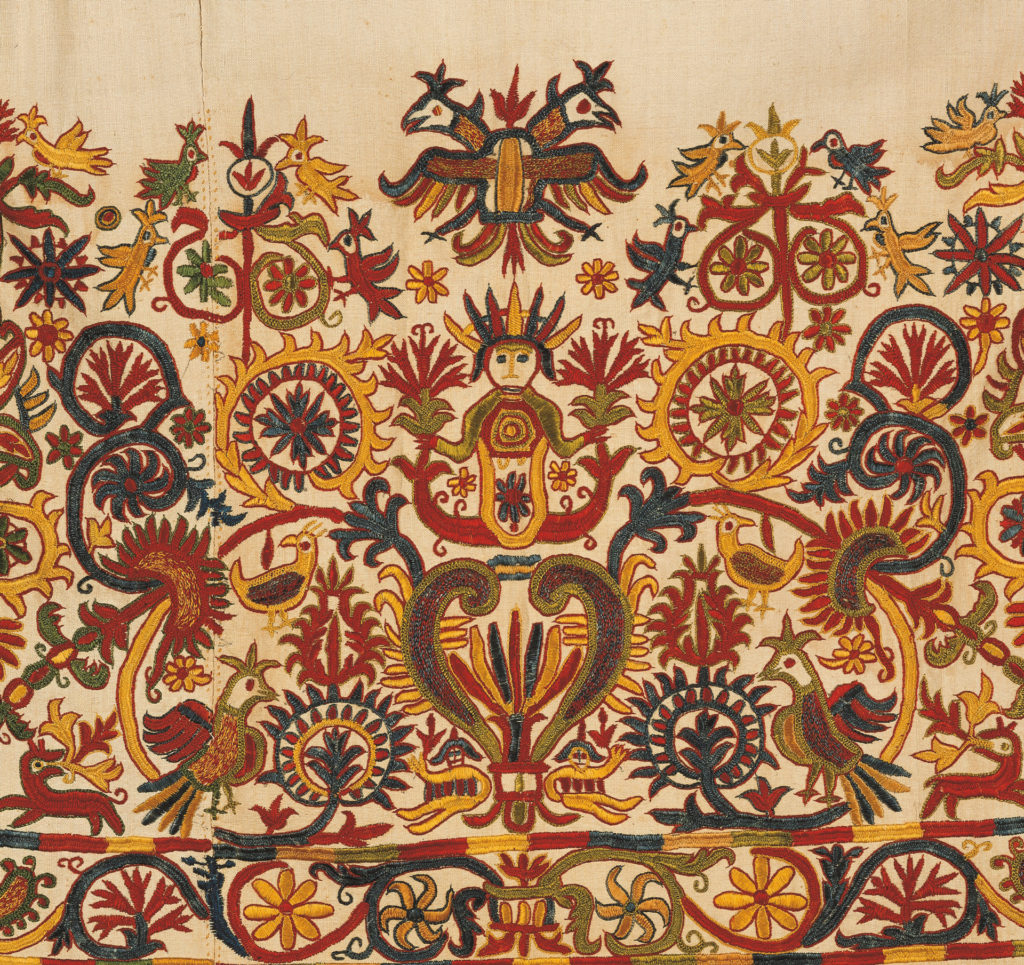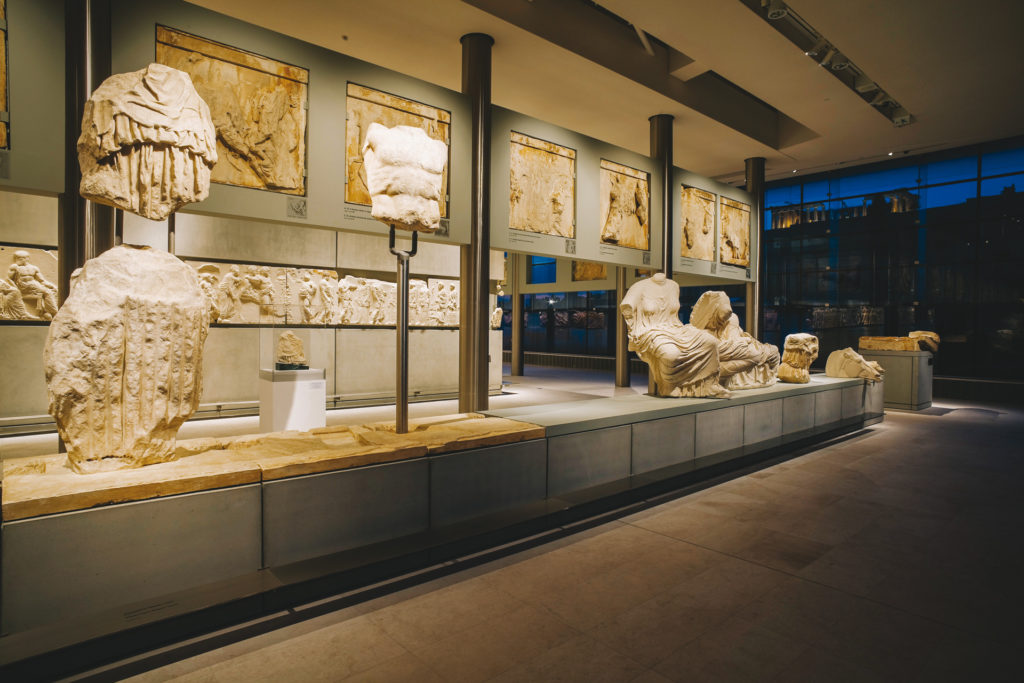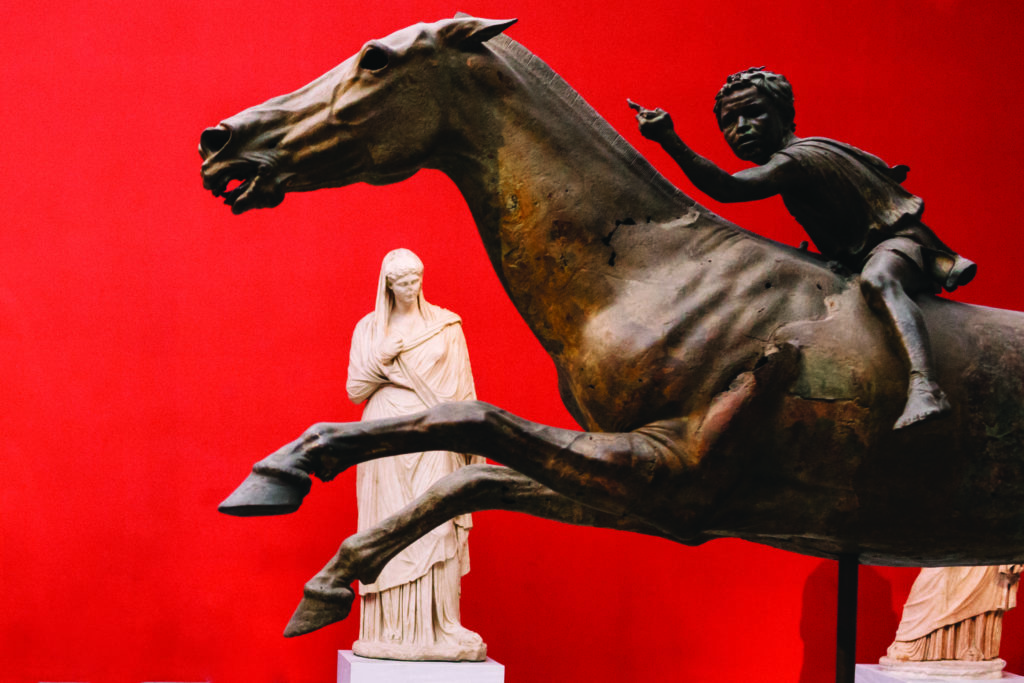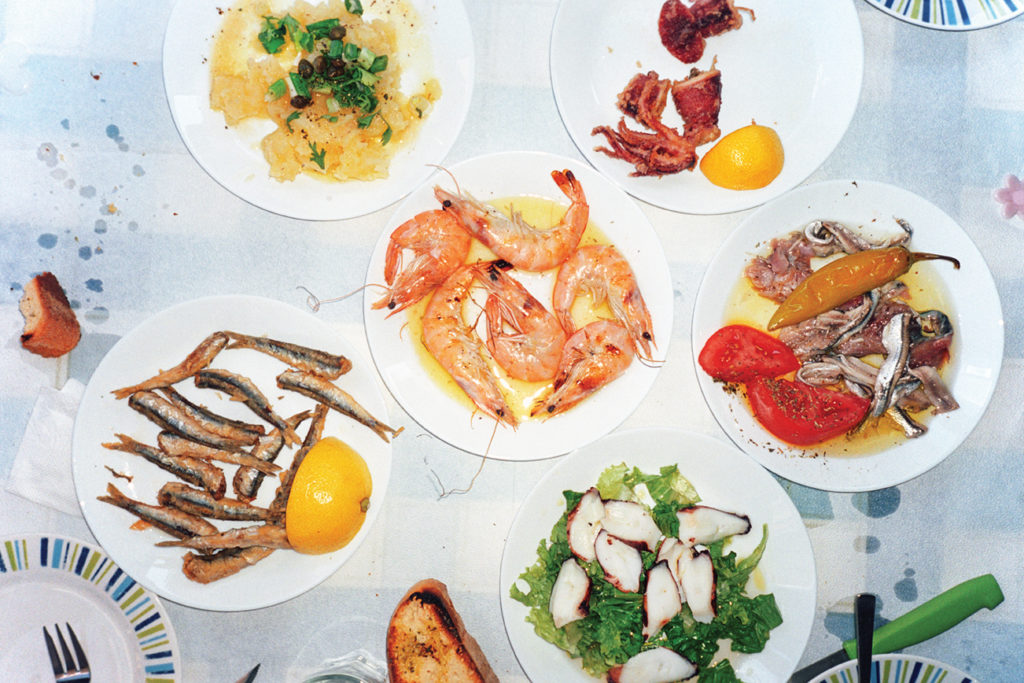I have a personal demon that possesses me every time I leave Athens; one that urges me to search for the finest local food, the best taverna, the hidden, isolated restaurant no one else has yet discovered. I find myself asking friends, acquaintances and strangers, but mostly locals, where they themselves enjoy eating. At times the precious intelligence comes from travellers with whom I share the same whim for gastronomical pleasure. So instead of lounging in sandy beaches gazing at the emerald waters of the sea, I hit the mountains in search of other gastronomic paradise.
It’s true that most of the times, after covering considerable distance, my expectations are not met for the mere fact that taste is after all a personal affair. Don’t get me wrong. Anyone recommending a heavenly place to eat means well, and most importantly they genuinely believe that what they tasted was great. Taking that into consideration, that’s where our culinary paths must inevitably part, probably never to meet again.
It is true that each and every one of us appreciates food based on our background and gustatory perception. What is also true is that what one considers the epitome of taste could be indifferent for someone else, or often the worst gastronomic experience ever. Nevertheless, I insist on overlooking this fact in the hope of discovering that one special place that will make the time spent driving that extra kilometers worthwhile and offer me an unforgettable culinary experience. And if I am lucky enough to hit bull’s eye one out of twenty times, then I feel blissful and proud of myself for my persistence to roam around in search of that great taste. As for the remaining nineteen times, I will find myself ending up at a not-so-bad restaurant or tavern with honest, decent food, which is A-OK for those who live in the area and maybe for some passers-by too. Unfortunately, there are those other times when I am directed to places that people assume will be suited to a person that comes from the big city, a place with a somewhat “innovative” cuisine with salads dressed with tons of balsamic vinegar or a piece of feta cheese wrapped up in filo pastry covered with jam or honey and sprinkled with the omnipresent black sesame, or that poor, dry as a bone stuffed to the brim, pork tenderloin.
Most of the vegetables are grown in his own orchard. The same goes for the potatoes that are slowly cooked in olive oil and require 45′ to be served. He makes cheese from the milk of his sheep and cows. He explains that his cows are a small indigenous Cretan breed, branching directly from it’s ancient ancestors.
No one is to blame for recommending a place they like and I hold none of the friends, acquaintances or strangers that I submit to a third degree interrogation in search of that great restaurant, accountable. It is entirely my fault however, when knowing all that, I have the audacity to think that I can guess what my friends and my readers would like risking this way to ruin the day of the people that took the time to read my column and believe my words.
The excuses I can cite are innumerable, starting by saying that in the majority of times the space and words I’m assigned by my editors-in-chief are so limited that it is simply impossible to cover every aspect of my experience in a place. It goes without saying that my readers are not obliged to read between the lines in order to understand what I mean or if the place suggested would be to their liking. One could even, maybe pretentiously say, that my readers know what I like and this is precisely why they read me because our tastes coincide.
All these excuses however do not apply in this case. The truth is, that this time not only was I given ample space to write about everything, but I got to accompany it with realistic photos too. So if I fail to convey the true nature of Ntounias it will be entirely my fault and therefore I feel the need to apologise beforehand. Ntounias is a “Slow-food Restaurant” as it reads on the sign in the mountainous Drakona of Keramies in Chania.
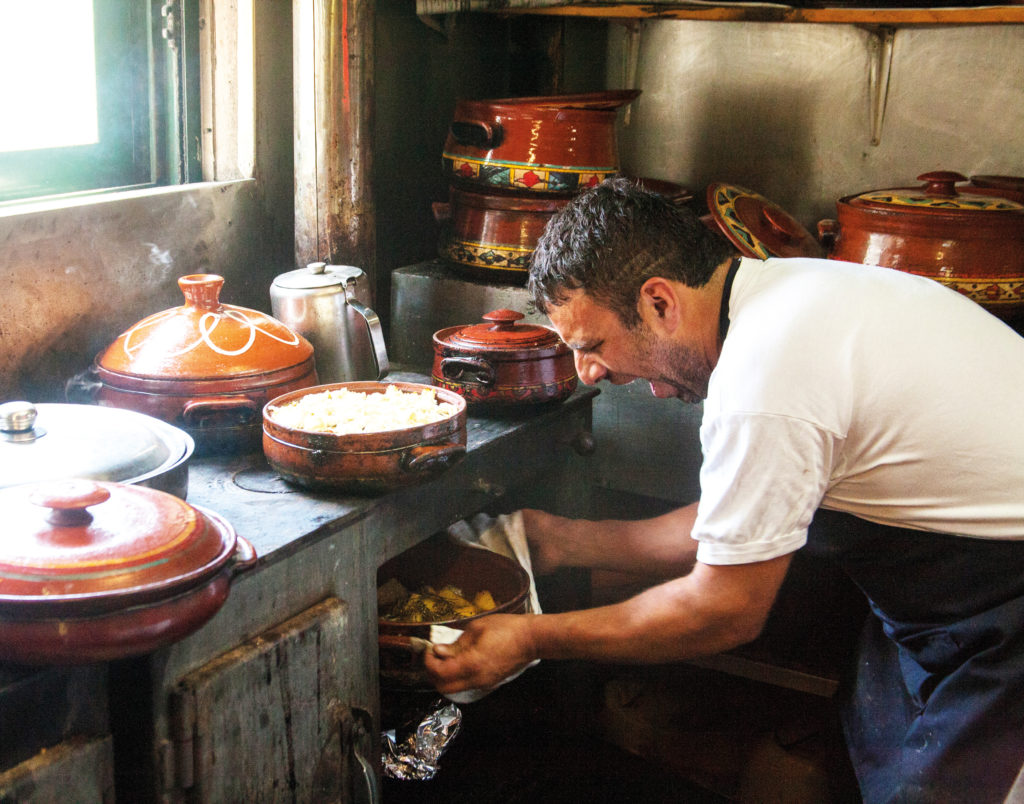
Stelios, the owner and cook of Ntounias.
There are two routes to reach Drakona of Keramies. Our very first time, we took the road from Mournies to Drakona. It is a nice ascent, at times foggy due to the weather, where you get to drive through villages following a leafy rural itinerary. There was a point we thought we were lost because the taverna is situated some kilometres past the village. However, we courageously kept going until we reached the place.
The times that followed, and there were many of them, we opted for the road to Therissos, a beautiful route that at times becomes even magical. Any description of the canyon, the rock formations, the springs, and the variety of colours, it would fail to do justice to the beauty of this itinerary. So this is the way to reach Ntounias directly without passing through Drakona.
In the small plateau, outside a whitewashed building, just below the Ntounias sign, two children are playing with their pets; a small goat, a rather large dog and a three-legged hairy tiny dog. There are cars parked, a small terrace on an elevation covered by wattle, and a number of open hearths aside, on which there are covered pots and a skillet full of coarsely cut potatoes simmering under the fire.
The burgher in me is immediately taken aback from the dust and the soil around me, but the unease vanishes into thin air once the owner, in his crisp white T-shirt, his jeans and apron, emerges from the tavern with a tea towel placed over his one hand with a welcoming as well as inquisitive expression on his face, wondering what on earth are these Greeks doing up there. “Sit wherever you want and I’ll be back in a minute”. My eyes and nose follow his other hand that holds a plate that I would love to devour instantly, full of vegetables from their own orchard, caramelised not in some sophisticated way, but in good quality olive oil. I obviously have no reason to object and we sit at a table.
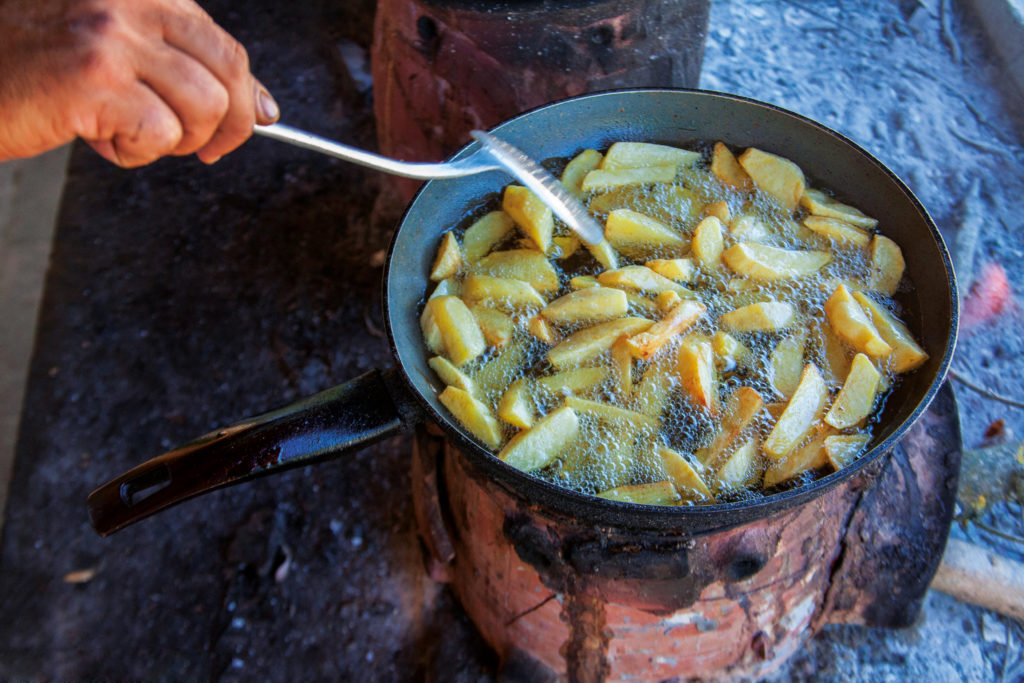
Frying potatoes on an open – wood fire.
A few minutes after our arrival I commence for my usual inspection inside the taverna, always under the guise of a visit to the loo. As I pass by the kitchen, Stelios, the owner, opens the door and simply ushers me in. I take two steps and find myself in a strange – for my standards – reality. On the left there is an indoor built wood-oven, and right beneath the window two wood-stoves with clay pots on top of them and baking trays inside their ovens. In a corner a sink full of freshly washed vegetables, a countertop, some shelves and a simple large fridge.
A smiling dark haired girl, his wife Evmorfili as he introduces her to me, is supervising the pots and pans. The wall over the stoves as well as the oven door are blackened by the fire. “Come” says the girl lifting the covers of the saucepans and the pots one by one. I find myself staring at all the local dishes I have been dying to taste, but haven’t found anywhere else, parading in front of my eyes. There are some dishes whose ingredients I recognize, but at the same time they are combined in a way I haven’t seen before. I thank them by nodding my head, and go to wash my hands before heading back to our table. I suggest we order one of each dish without saying anything about my visit to the kitchen. Instead I prefer it to be a surprise.
Stelios recites the menu for us to choose from, explaining at the same time the origin of the raw materials used in the preparation of the dishes. Most of the vegetables are grown in his own orchard. The same goes for the potatoes that are slowly cooked in olive oil and require 45′ to be served. He makes cheese from the milk of his sheep and cows. He explains that his cows are a small indigenous Cretan breed, branching directly from it’s ancient ancestors. They graze freely on the nearby hill and during winter, when the temperature is low, they are housed in a small cowshed situated only 100 meters from the restaurant. Though he doesn’t keep goats, his neighbor villagers do. He also cultivates two-rowed barley and emmer wheat, and he makes bread and rusks by mixing them together. When the kitchen runs out of tomatoes or any other vegetable he takes his basket and runs off to the orchard to collect whatever he’s missing.
As he speaks he understands which dish gets our attention, so he presents it in more detail. “The aubergines with xynochondros (a Cretan cereal made of sour milk and cracked wheat) are very tasty madam, you should try it, and in any case I will bring over some. You should also try the goat, you’ll like it, trust me.” We end up ordering most of the dishes despite the fact that at some point he asks us to stop because and I cite him “it’s a pity, you have ordered too much and you won’t enjoy it as you should”.
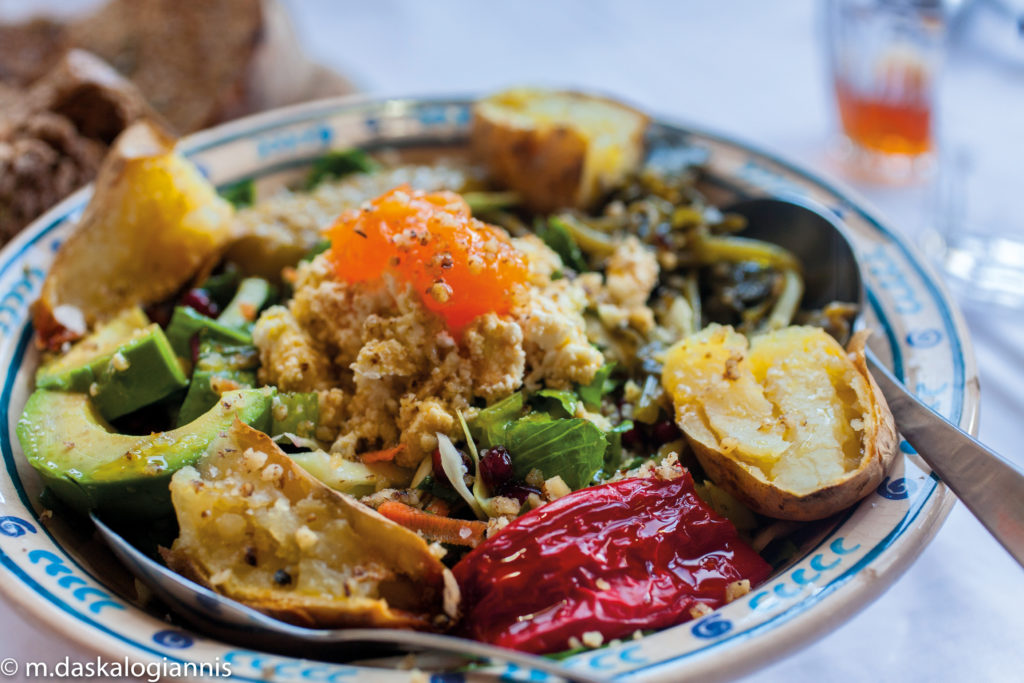
Their village salad – choriatiki in Greek – is a must, and a far cry from the usual touristy version with feta, tomato and cucumber.
He brings over our order and we ask him to grab a chair and join us. We learn that he was trained as a cook and used to work in restaurants and hotels in Chania until he decided to return to his village and realize his dream. His wife followed him in his dream and their family became bigger with the addition of five children.
From the dishes he prepares and the handling of raw materials, to the slow cooking process, he has a very clear and strong view on how things must be done. Nothing is left to chance and the everyday toil has become a way of life. “We’re never closed madam; we’re open 365 days a year. You will always find us here. ”
Their village salad – Choriatiki in Greek – is a must, and a far cry from the usual touristy version with feta, tomato and cucumber. This is their own village’s salad with tomatoes from the orchard, crunchy cucumber, olives, aubergines, purslane, wild rocket, baked potatoes, a handful of crisp chick peas, homemade rusks placed at the bottom of the plate to absorb all the juiciness of the vegetables and last but not least their own xinomizithra (a local soft white cheese). I suggested that we call this a “mountain salad” to avoid any misunderstandings but he looked me straight in the eye and said “but this is a village salad, why on earth should we call it otherwise’?
His pasta with aubergines is to die for and the lamb cooked in baking paper is simply delicious. The pork with molasses is a must try. Accompany your main course with stewed vegetables that vary depending on the season. If they have Chania burek –it’s a seasonal dish – don’t hesitate to try it. The stuffed vegetables cooked in a clay pot taste heavenly thanks to the wood fire; try them with ladotyri (a local cheese). If you like veal, order their stew in red sauce. Their meat patty, airy and juicy, is prepared by mixing four types of minced meat: veal, pork, lamb and goat. Don’t forget to order a plate of fried potatoes, which are simply a delight for the palate. However, you won’t find any grilled meat, chicken fillet or fish in the menu. Please don’t ask him; he will be deeply hurt.
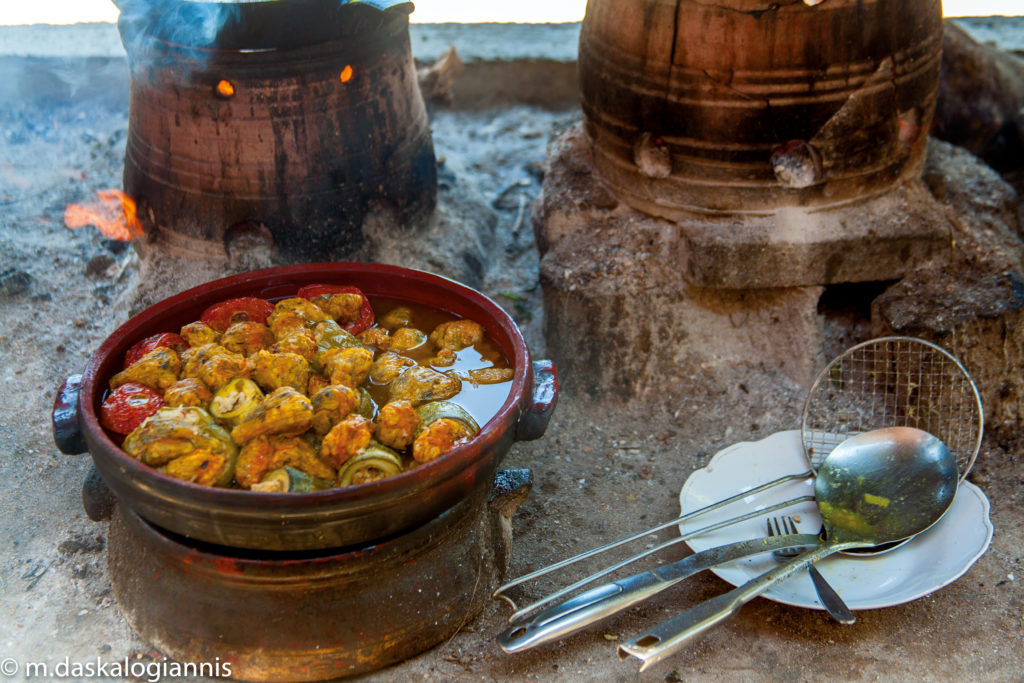
“Gemista” or Stuffed vegetables
There is no fixed personnel in Ntounias, apart from two youngsters that come from Chania to work for him during the Summer. After all it’s not that easy to find someone who would want to come and work in the middle of nowhere, as he says. Mind you, this “middle of nowhere” has become the talk of the island. Foreign travellers, as well as “crazy foodies” from Heraklion and Chania are ecstatic with their discovery. There have even been presentations in foreign press and camera crews that have travelled all the way from Europe to showcase his restaurant. He tries to sound casual about it, but the tone of his voice reveals the satisfaction he feels.
We share wine that he brought from his cellar; an eight-year old and a five-year old, both straight from his casks. Would we drink it in any other occasion? Maybe not, but things here are different. It is part of the whole experience, and by leaving something out that experience wouldn’t be whole. Either way, he is fully aware that his wine is not easily enjoyed by everyone.
Stelios is an old-school professional. He cares and he sincerely wants you to enjoy yourself at his place, to eat well, to leave satisfied and to have a nice thing to say when someone asks you about Ntounias.
So, do I recommend it? Yes, undoubtedly, but only if you are willing to fully immerse in the experience; starting by casting aside any preconceptions and expectations along the road. As for us, if that counts in some way, we find ourselves returning here again and again. And as a friend once said, “If he changes things, if he becomes more formal, he won’t be our Stelios anymore”.
